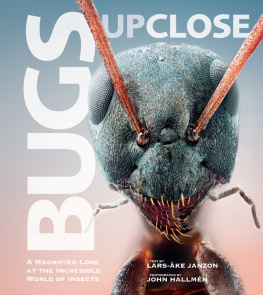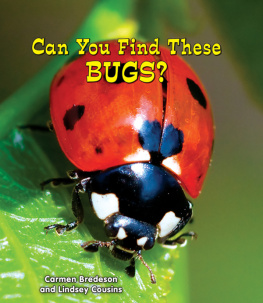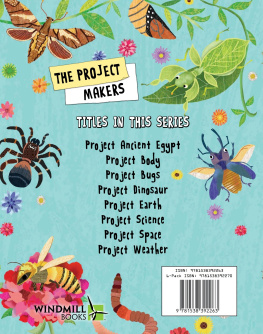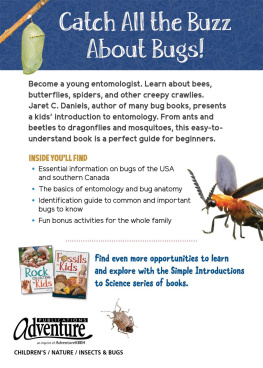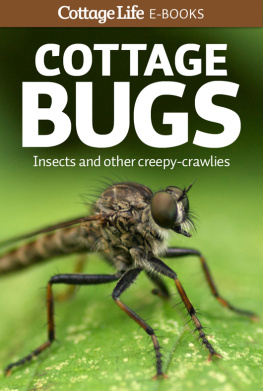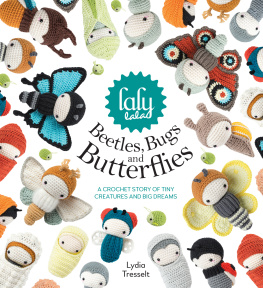The feeling of connecting with someone is never as pronounced as when we look into their eyes. Humans, being the social creatures that we are, cannot help but to project emotions and a conscious mind onto not only our own species, but all the wildlife that are similar to us. Insects, on the other hand, are often too small to evoke such a response. Rather, we see them as something we cannot actually identify with. Maybe thats why we get such an altering experience when we pick up a magnifying glass and discover that what seemed like only a tangle of legs and antennae is suddenly staring right back at us.
When we further acquaint ourselves with insects, spiders, and the other small creatures that we refer to as bugs, it changes our perception of nature. An ordinary grove copse transforms into something more when we discover and acknowledge its hidden inhabitants. Bugs are everywhere, but in order to find them, you must sometimes look very hard.
As a young boy, I loved turning rocks. What can be found beneath this one? A shiny beetle, a sullen centipede, teeming hordes of ants, or, better yet, something Ive never seen before! Thirty years later nothing has changedI still feel great anticipation and satisfaction when peeking under a rock.
Only under high magnification can we see and fully appreciate the varying shapes and designs of these bugs up close. The visual characterizations of the different species tell interesting tales of their behavior, living conditions, and adjustments to the surrounding environments.
I would like to give a big thank-you to Lars-ke Janzon, whose texts added greater depth and an additional dimension of the biology of these creatures. The closer we get to nature, the more questions we seem to have. Lars-kes knowledge, experience, and ability when it comes to answering seemingly every question imaginable are unique. Thanks to him we now realize how much more there is to explore and that there are still a few stones left unturned.
John Hallmn, May 2012

These silhouette images reveal the natural size of specific bugs. All the species found in this book, whether photographed in nature or in a studio, can also be found in Sweden. Most of them are also quite common throughout the world. Here you see a tick, body length: 3 mm; and an American cockroach, body length: 35 mm.


Dawn at the firing range of Ut (a small island, east of Stockholm) in early July. The local beetles are all sitting quietly among the plants and dewdrops. Soon this place will be buzzing with life.
I NSECTS ARE COLD BLOODED, and it is the outside temperature that determines whether they are active or not. Insects are usually able to withstand frosty nights, as they can survive being sub-cooled (i.e., having their body temperature going below the freezing point without them freezing to death). When the sun rises, the heat brought will thaw the insects slowly and turn the frost into water droplets that will later evaporate.
Scientists have long debated whether insects have the ability to sleep or not. Some argue that insects have a simpler nervous system that cannot contain anything resembling our own sleep stage. Another argument would be that insects dont have any eyelids, and therefore cannot sleep. But today, we now know some insects do sleep, or at least have a behavioral state that resembles sleep. Insects require inactive periods of time hiding and sitting still. It might not matter what we call this inactive state, but we can confirm that they indeed have long, sedentary moments.


Emerald damselfly Lestes sponsa
Body length: 30 mm | Sdermanland Country (Nackareservatet Nature Reserve, located on the border between Stockholm and Nacka), 8 exposures
This is one of Swedens most common damselflies during the late summer. They live next to stagnant water that has rich vegetation. When the damselfly rests, it keeps its body turned downward, with its wings opened only halfway.


Crane fly Tipulidae
Body length: 11 mm | land, Sweden, 5 exposures
After a damp, cold night the crane fly slowly gets dry. During this time, it is completely defenseless and in danger of becoming easy prey for an insectivore like a passing bird or dragonfly. When dry and awake, the crane fly has a defense mechanism that can be best described as a type of self-mutilation. In a pinch it can lose a leg to get away. A lost leg will partly grow back again, but will never function as well as its original leg.


Anthomyiidae fly Anthomyiidae
Body length: 7 mm | Sdermanland (Nackareservatet Nature Reserve), 6 exposures
Anthomyiidae flies are a grayish/brown/black color, small to medium in size, and a close relative to the common housefly. They resemble the housefly but usually have a slimmer physique. You will often find these flies in flowers with accessible nectar, hence their Swedish name, blomsterfluga (flower fly).


Bird-cherry ermine (moth) Yponomeuta evonymella
Body length: 10 mm | Sdermanland (Nackareservatet Nature Reserve), 88 exposures
The bird-cherry ermine caterpillars are found only on bird-cherry trees, living off their leaves. When the caterpillars are fully grown, they spin a cocoon, and hundreds of cocoons can be found hanging together. In June, many bird-cherries are bare and completely spun by the caterpillars. The trees survive, even if theyve been eaten bare several years in a row. The ermine attacks usually cease after a few years, when the natural enemy of the caterpillarsthe parasitoid waspbecomes numerous enough to keep the population down.


Damselfly Zygoptera
Body length: 30 mm | Sdermanland (Nackareservatet Nature Reserve), 52 exposures
This damselfly is completely covered with water droplets. Larger dragonflies have multifaceted eyes that touch (or almost touch), while the eyes of the smaller damselflies are completely separated from each other. Before a damselfly settles down for the night, it finds a blade of grass that is wide enough to hide its body but still narrow enough for its eyes to stand out on either side, giving it an unobstructed view of all directions.

